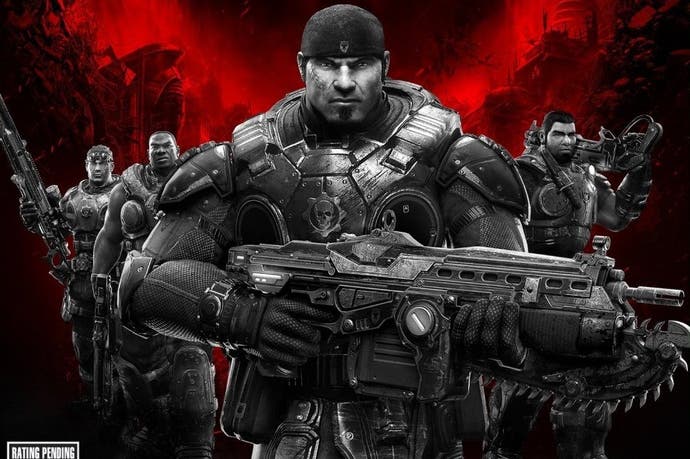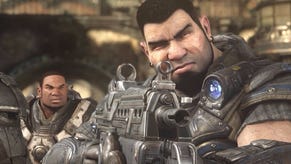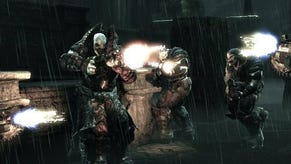Digital Foundry: Hands-on with the Gears of War Ultimate Beta
Fenix rising.
It's an enticing proposition. Microsoft has remastered Gears of War for Xbox One and PC in a new Ultimate Edition featuring massively improved visuals and a smooth 60 frames per second - in multiplayer at least. Following Monday's E3 conference, beta codes for the Xbox One version began to roll out, and luckily enough, we were one of the first to receive them.
Perhaps unsurprisingly, the Ultimate Edition is utilising a mature version of Unreal Engine 3 rather than the new UE4 engine powering Gears 4. The groundbreaking original release was one of the very first UE3 titles on the market almost ten years ago, so in theory moving to the latest iteration of the engine brings a lot to the table (the extent of which should be more pronounced in the single-player campaign). In addition, this isn't a simple repurposing of assets either, but rather a full-on remake using an entirely new set of textures, models, and effects. While the transformation isn't as dramatic as Halo 2: Anniversary, the changes are definitely more significant than we expected.
The basics are all there as well - a full 1920x1080 frame-buffer with a smattering of FXAA for good measure. UE3 titles for Xbox 360 were known to use 2x MSAA fairly early in the rendering cycle with spotty results but, even if that still is the case on Xbox One, the end results are nearly imperceptible through the veil of post-process anti-aliasing. There is a fair amount of shimmering objects along with typical post-AA blur, but overall image quality is attractive, and a huge boost over the original Xbox 360 game. That said, upon revisiting the original, we were surprised at how nicely the image quality manages to hold up, even at 720p.
Aside from resolution, the most noticeable improvement comes from the lighting. More in line with the brighter look seen in Gears 3, this remake delivers a softer, more subtle hue, something that is perhaps down to the much improved Unreal Lightmass technology - an addition made to UE3 years after the release of the original Gears. Water rendering is also much improved with three dimensional waves crashing up against the map instead of the flat texture used in the original game. Texture streaming is also faster than Xbox 360 on first load just as one would expect at this point.

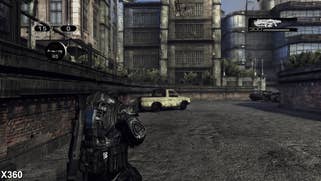

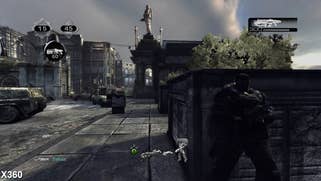





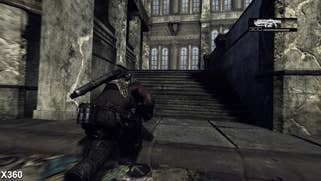
Other nice touches include added cube map reflections to various water puddles, massively improved foliage quality, and additional clutter around the world. Shadow quality is also enhanced thanks to higher resolution shadow maps and the inclusion of ambient occlusion. A brand new menu system with higher resolution fonts and a cleaned up HUD top off the package nicely.
Curiously, not all of UE3's features appear to be fully implemented in this beta. The most obvious omission is motion blur - a lovely feature that has been completely jettisoned for this beta. Gears of War on Xbox 360 featured a basic implementation of camera-based motion blur, while Gears 3 went one stage further with a full per-object implementation. Also, as nice as the improved lighting is, the overall impression is that Gears 3 took it one stage further. Overall, the experience just doesn't feel as visually refined as the series running at its best on Xbox 360, but we should remember that this is just a single multiplayer map - we're more excited to see the campaign.
Performance-wise things are shaping up nicely, but gameplay is not quite as flawless as we might have hoped. Gears Ultimate aims for 60 frames per second and manages to deliver that the vast majority of the time. It feels responsive and looks great in motion, but tearing manages to rear its head during normal gameplay. Peering outward towards the centre of the map during a match is often all it takes to trigger torn frames along the top 25 per cent of the image. The same occurs when the screen is filled with alpha effects such as explosions or smoke clouds. The frame-rate remains relatively high through this so play response isn't an issue but it does subtract a bit of polish from the experience.
While a flowing 60fps frame-rate works great for the Gears multiplayer experience, there is some confusion about the status of the game. The language used during the press conference seems to imply that the 60fps target only applies to the game's multiplayer mode. While we have no confirmation here, the wording leaves the door open to a reduced 30fps performance target in single-player. This would allow for more detail and a higher degree of effects work, so it wouldn't be a uniformly bad scenario, but some clarity from Microsoft would be appreciated.
Ultimately, this initial taste of the Gears of War Ultimate Edition is looking promising. There are arguments to be made that the game feels dated due to the evolution offered in its sequels but that isn't really what this is all about. This is clearly a release designed to capture the essence of the original Gears of War - not a 'catch all' hybrid experience of the entire trilogy. Perhaps the inclusion of both classic and sequel gameplay modes could keep everyone happy, but the sense right now is that Microsoft is aiming to preserve the original experience - just as it did with the Halo anniversary editions.
As things stand, we've only been afforded a small but significant glimpse into what the game offers. Thankfully it won't be too long until we get to experience the full release - Gears of War Ultimate Edition ships on both Xbox One and PC on August 25th.
